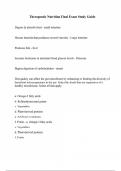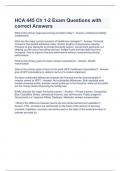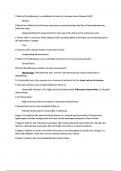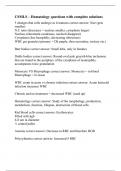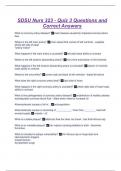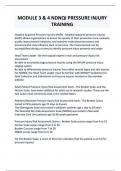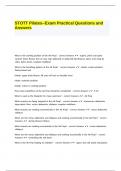Exam (elaborations)
NUR 460 Exam 1 Study Questions and Correct Answers
- Course
- Institution
Identify the three components of the Institute for Healthcare Improvement's Triple Aim. Related to access, quality, and cost of care. Explain how following, leading, and managing are similar and different. Following: Each member contributes optimally, but still listens and follows a peer who is le...
[Show more]




